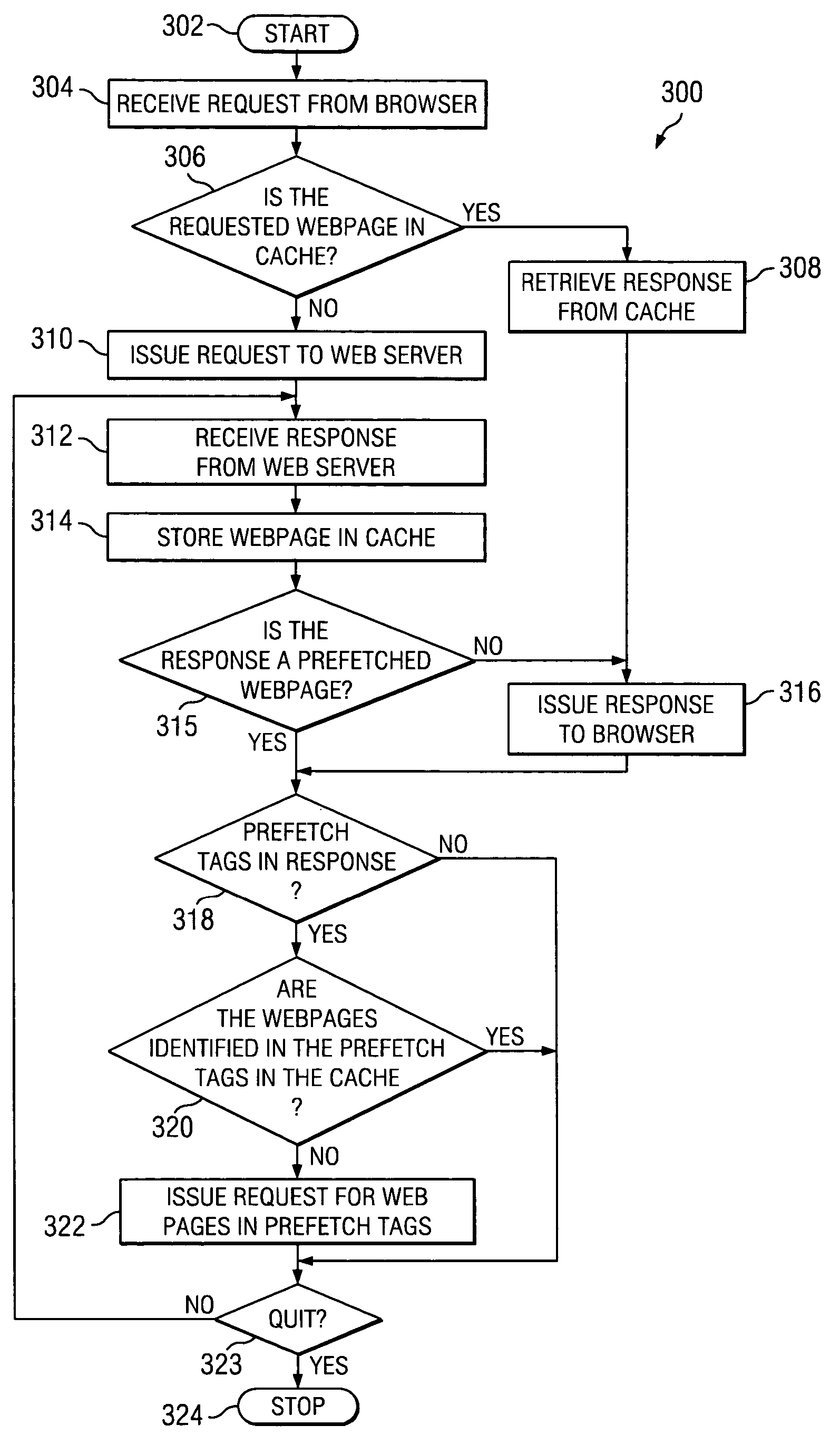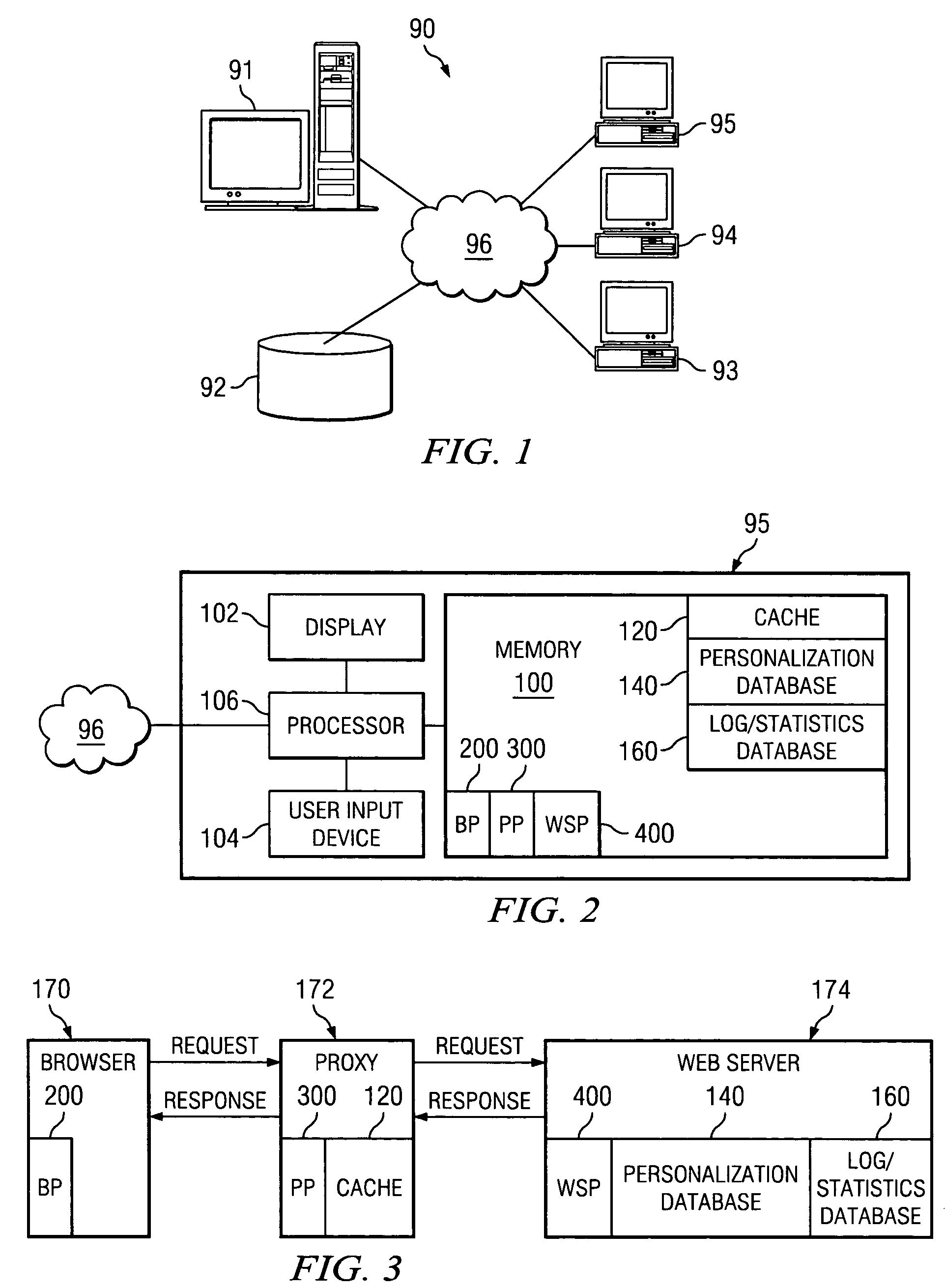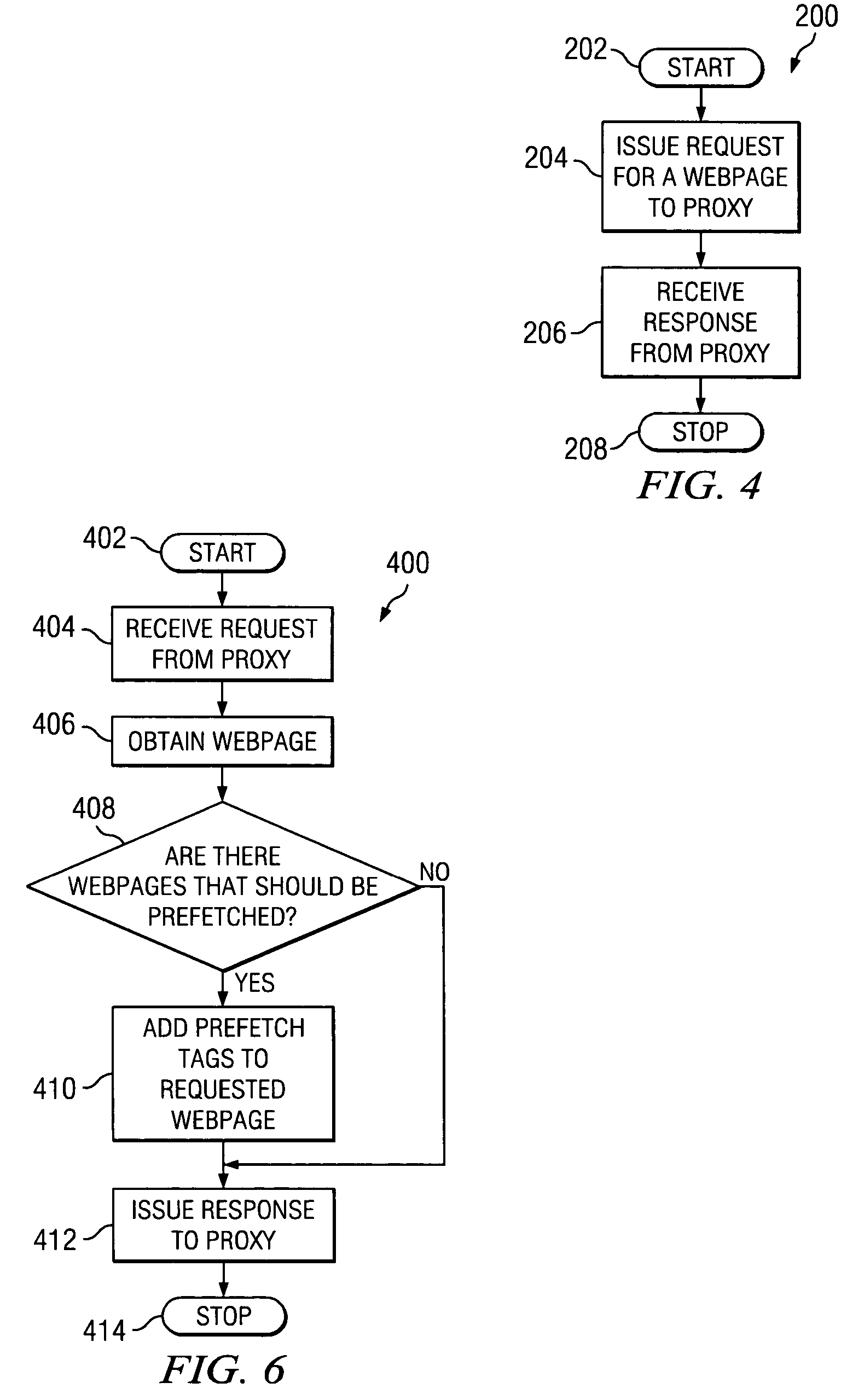System and method for dynamically inserting prefetch tags by the web server
a dynamically inserted web server and prefetch tag technology, applied in the field of system and method for dynamically inserted prefetch tags by the web server, can solve the problems of increasing the time required for a user to request and receive a webpage, increasing the time required for a user, and affecting the user's experience, so as to reduce the time required for the user to receive a user-requested webpage and the time required for the user to receive a webpage is substantially reduced.
- Summary
- Abstract
- Description
- Claims
- Application Information
AI Technical Summary
Benefits of technology
Problems solved by technology
Method used
Image
Examples
Embodiment Construction
[0018]As used herein, the term “browser” shall mean a computer program for browsing the World Wide Web.
[0019]As used herein, the term “computer” shall mean a machine having a processor, a memory, and an operating system, capable of interaction with a user or other computer, and shall include without limitation desktop computers, notebook computers, personal digital assistants (PDAs), servers, handheld computers, and similar devices.
[0020]As used herein, the term “log / statistics database” shall mean a database or file of the history and the probability of a user requesting a second webpage from a hyperlink on a first webpage.
[0021]As used herein, the term “personalization database” shall mean a database or file located in a web server that contains information regarding the browsing habits of a plurality of users.
[0022]As used herein, the term “prefetch” shall mean to obtain a prefetched webpage and store the prefetched webpage in cache memory in the proxy or cache memory of the user...
PUM
 Login to View More
Login to View More Abstract
Description
Claims
Application Information
 Login to View More
Login to View More - R&D
- Intellectual Property
- Life Sciences
- Materials
- Tech Scout
- Unparalleled Data Quality
- Higher Quality Content
- 60% Fewer Hallucinations
Browse by: Latest US Patents, China's latest patents, Technical Efficacy Thesaurus, Application Domain, Technology Topic, Popular Technical Reports.
© 2025 PatSnap. All rights reserved.Legal|Privacy policy|Modern Slavery Act Transparency Statement|Sitemap|About US| Contact US: help@patsnap.com



